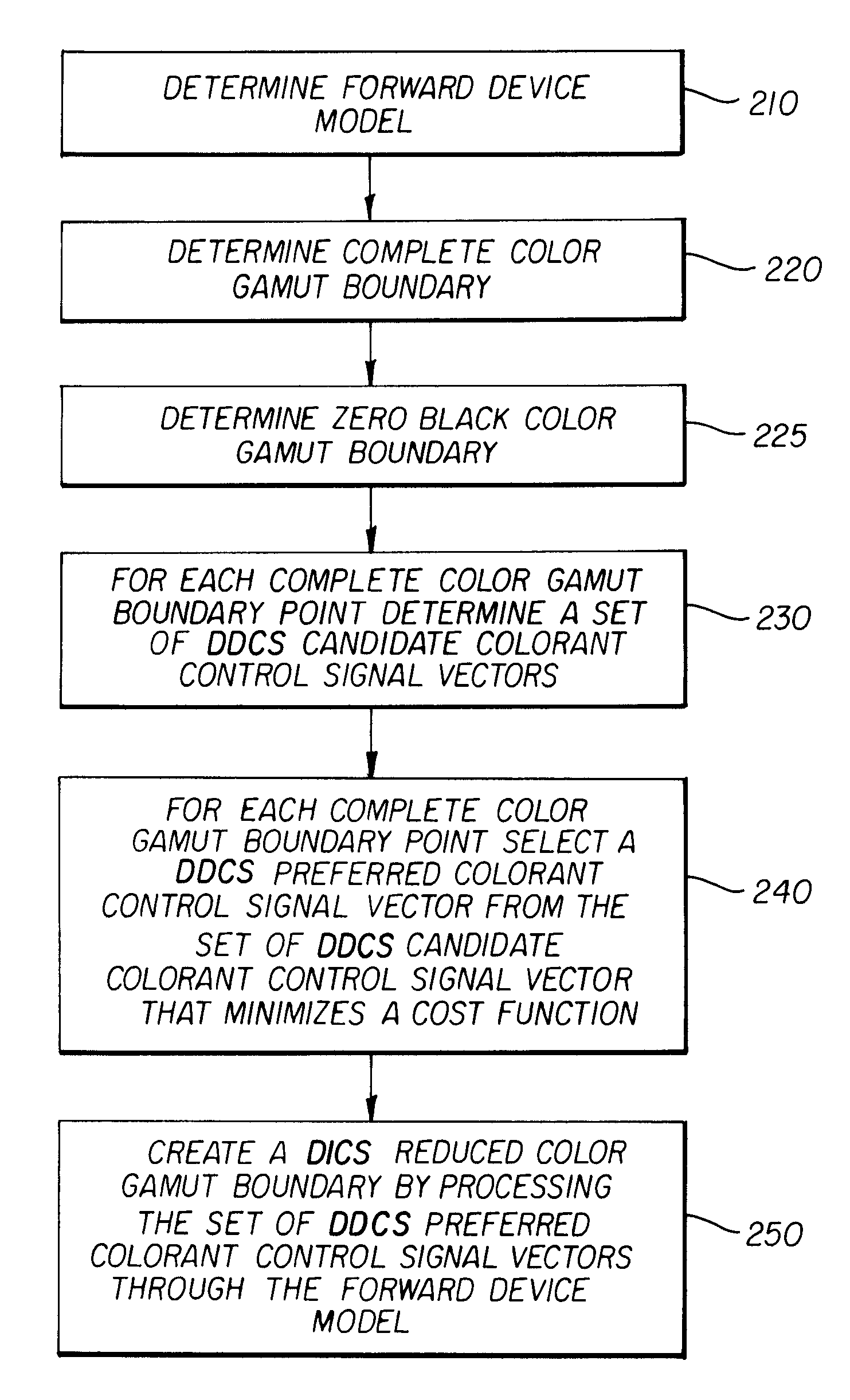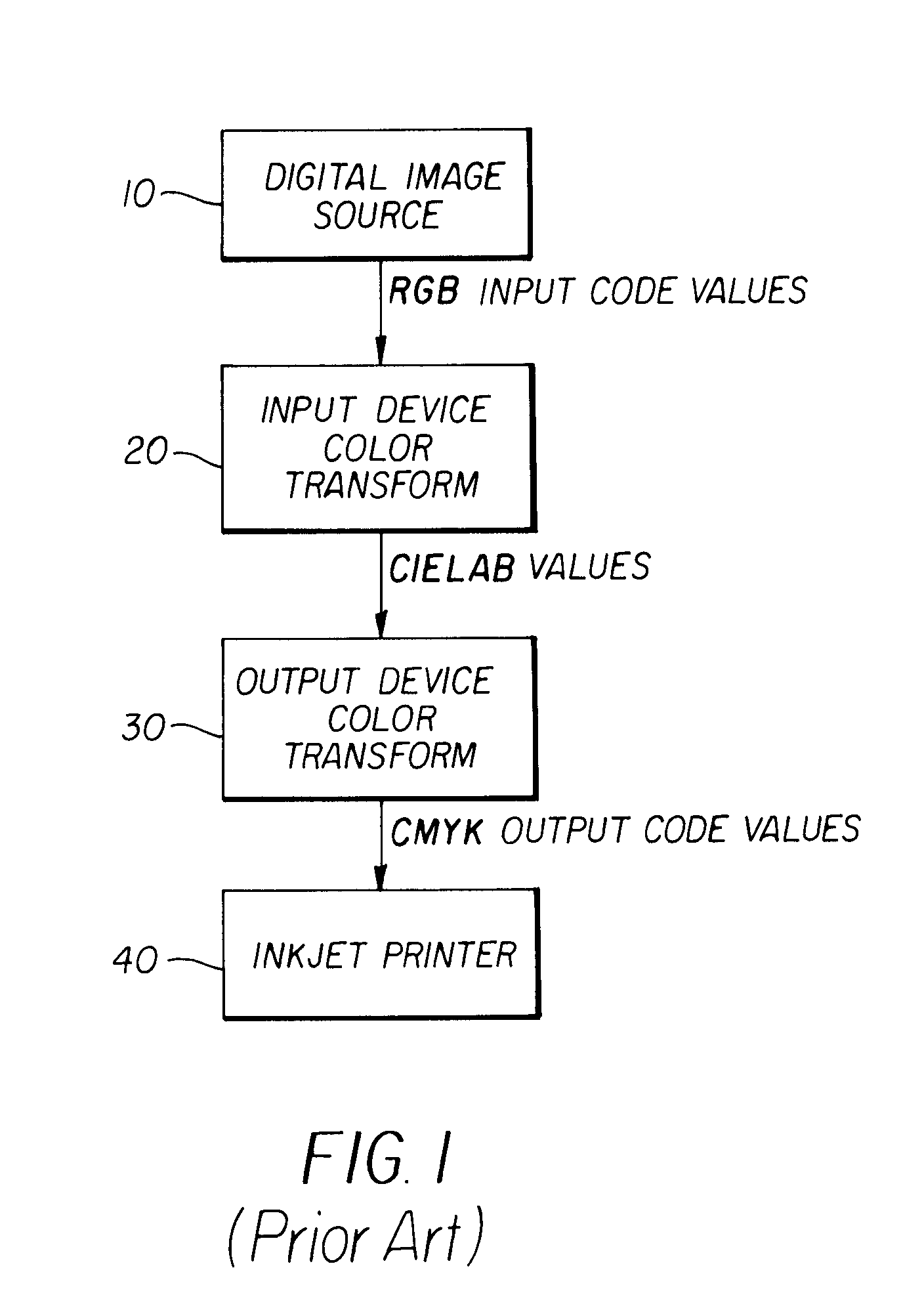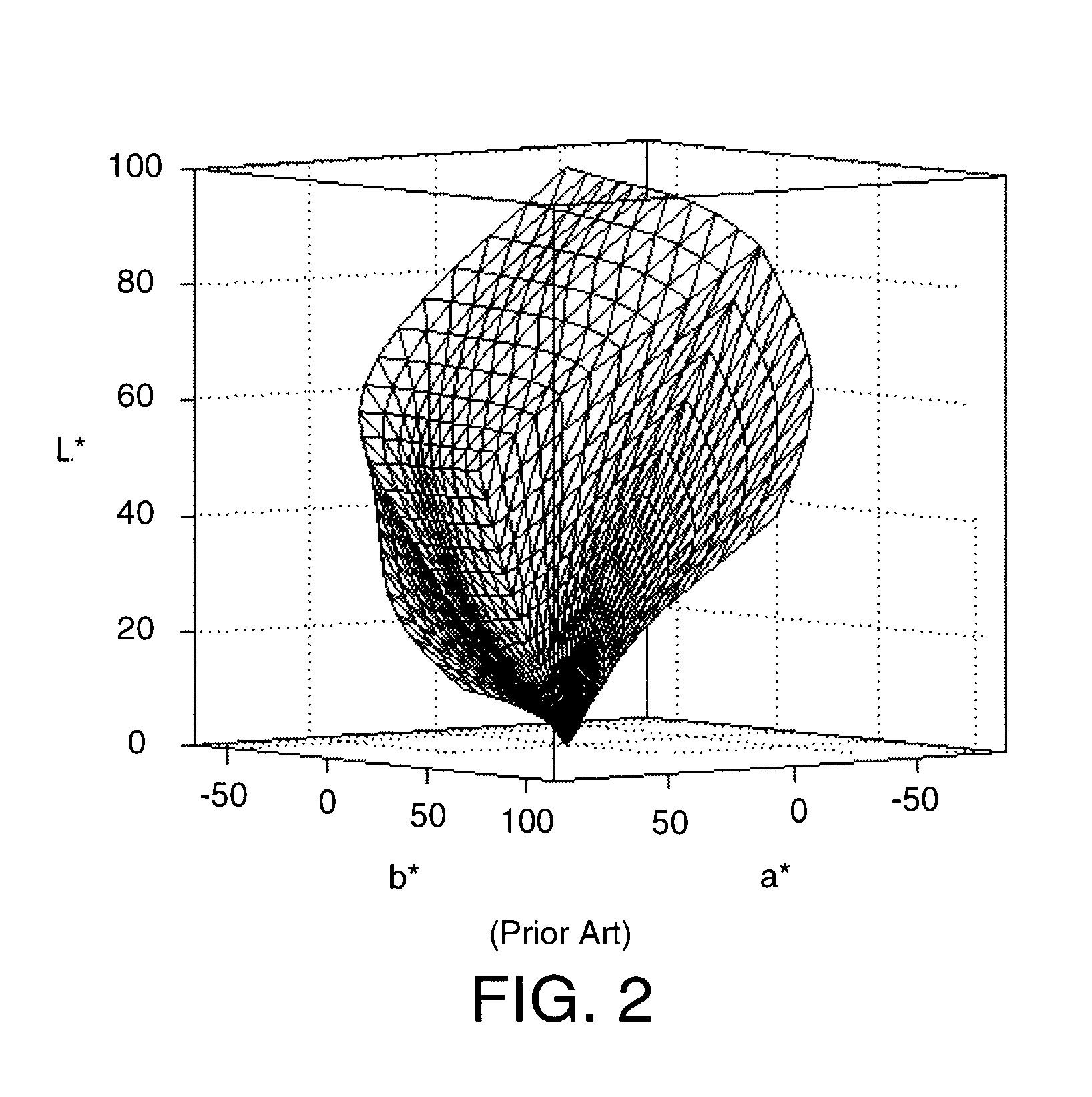Color gamut mapping using a cost function
a color gamut mapping and function technology, applied in the field of digital imaging, can solve the problems of affecting the color gamut mapping accuracy, the inability to create the output color imaging device, and the combination of colors can produce visible patterns with undesirable grainy appearance, etc., to achieve accurate color calibration, reduce color gamut boundaries, and high quality
- Summary
- Abstract
- Description
- Claims
- Application Information
AI Technical Summary
Benefits of technology
Problems solved by technology
Method used
Image
Examples
Embodiment Construction
[0033]A method of generating a reduced color gamut and / or a color gamut mapping transform that provides for accurate total colorant amount limiting, pleasing color reproduction, and control over graininess represents an advancement in the state of the art. A preferred embodiment of the present invention achieving these goals will be described herein below. The invention will be described in the context of a color output device consisting of an inkjet printer using CMYK inks, but one skilled in the art will recognize that the scope of the invention is not limited to this arrangement, and may be applied to other colorant sets and / or other printing or display technologies as well.
[0034]Referring to FIG. 3, a process is detailed that produces a reduced color gamut boundary (gamut surface descriptor) for a CMYK color printing system that includes the step of first determining a forward device model for the color imaging device 210. There are many ways in which the forward device model ma...
PUM
| Property | Measurement | Unit |
|---|---|---|
| degree of freedom | aaaaa | aaaaa |
| volume | aaaaa | aaaaa |
| colors | aaaaa | aaaaa |
Abstract
Description
Claims
Application Information
 Login to View More
Login to View More - R&D
- Intellectual Property
- Life Sciences
- Materials
- Tech Scout
- Unparalleled Data Quality
- Higher Quality Content
- 60% Fewer Hallucinations
Browse by: Latest US Patents, China's latest patents, Technical Efficacy Thesaurus, Application Domain, Technology Topic, Popular Technical Reports.
© 2025 PatSnap. All rights reserved.Legal|Privacy policy|Modern Slavery Act Transparency Statement|Sitemap|About US| Contact US: help@patsnap.com



